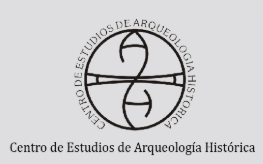Arqueología del urbanismo de Santafé de Bogotá:
Los antiguos sistemas de cañerías de la ciudad
DOI:
https://doi.org/10.35305/tpahl.vi5.74Keywords:
Urban Archaeology, Archaeometry, Colonial Hydraulic Structures, Santafé de BogotáAbstract
Following recent excavations in the former Royal Street of Santafé de Bogotá (Co- lombia), various sewer and aqueduct systems of the colonial and republican city were put into evidence. These findings led to the completion of typological and archaeometric analysis of the various structures that were identified, and with this it was possible to establish their function and construction periods. Based on these analyses, it was also possible to track the craft tradition from which these hydraulic structures derived from, all of which were manufactured with ceramic elements. This also meant delving into historical sources, particularly for the Republican era. Finally, from a broader scope of analysis between the installation of the first aque- ducts and their relationship to the urban settlement and the geographical environ- ment, alternative hypotheses are raised regarding the selection of the site for found- ing the city and the orientation of the layout of the city.







